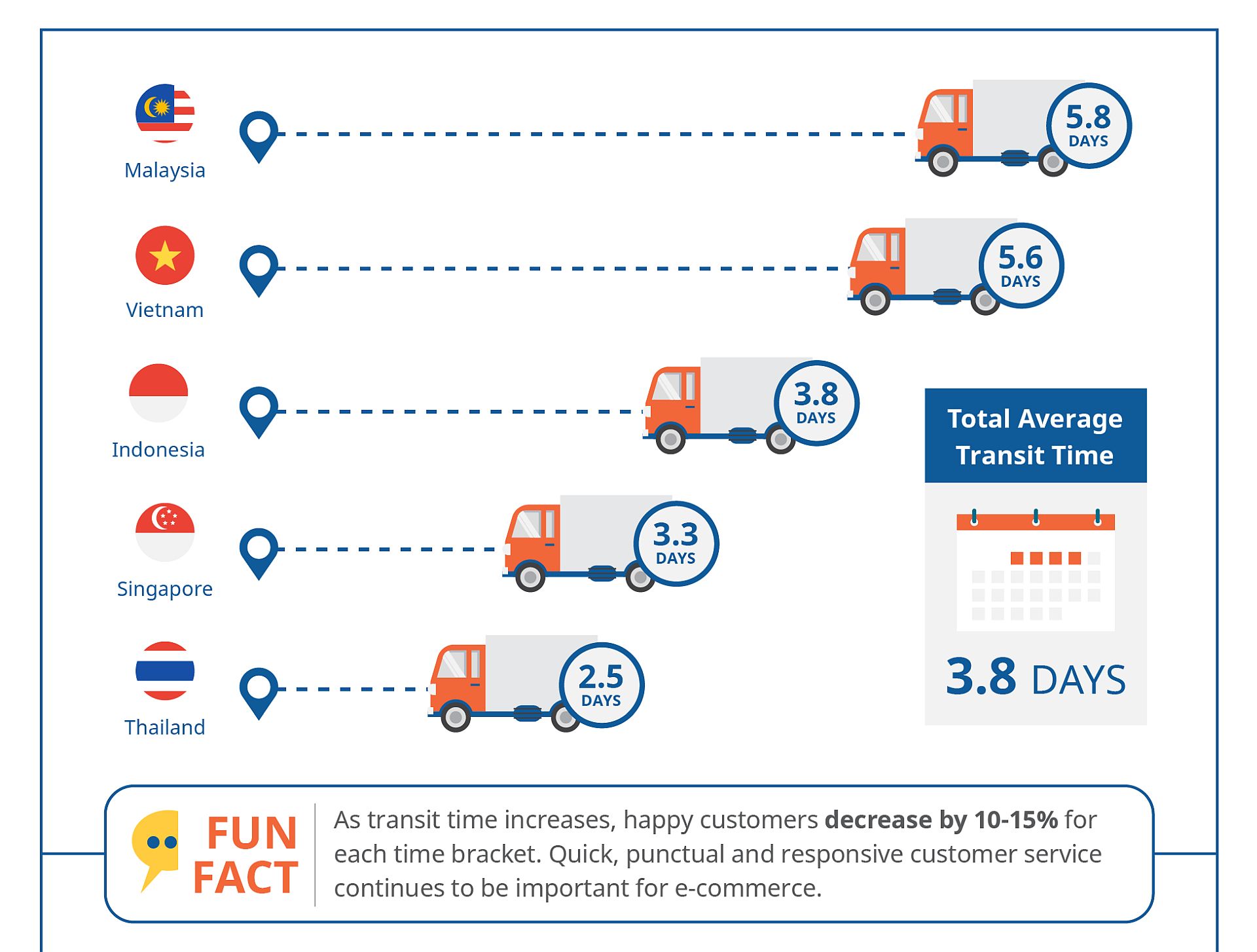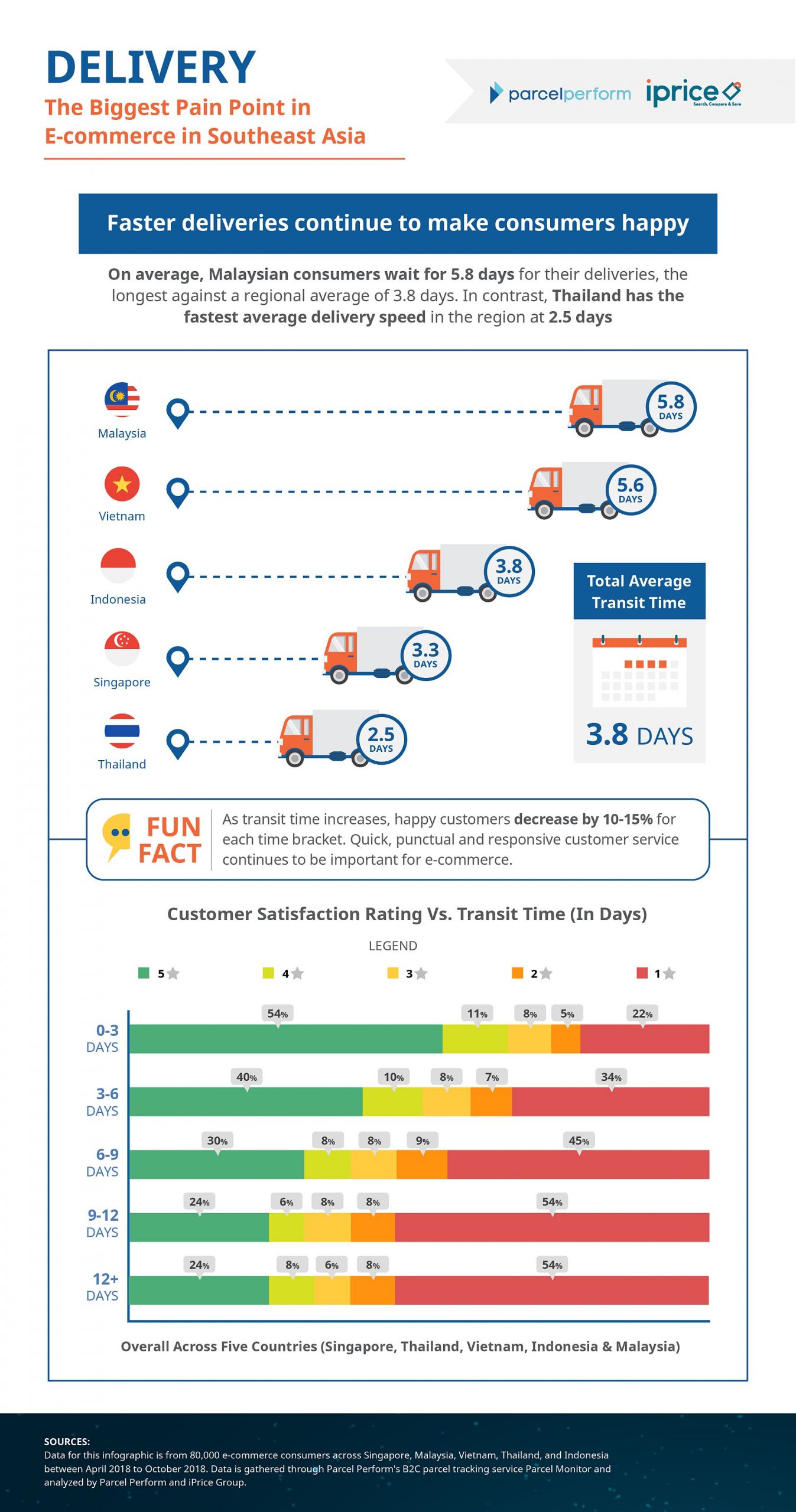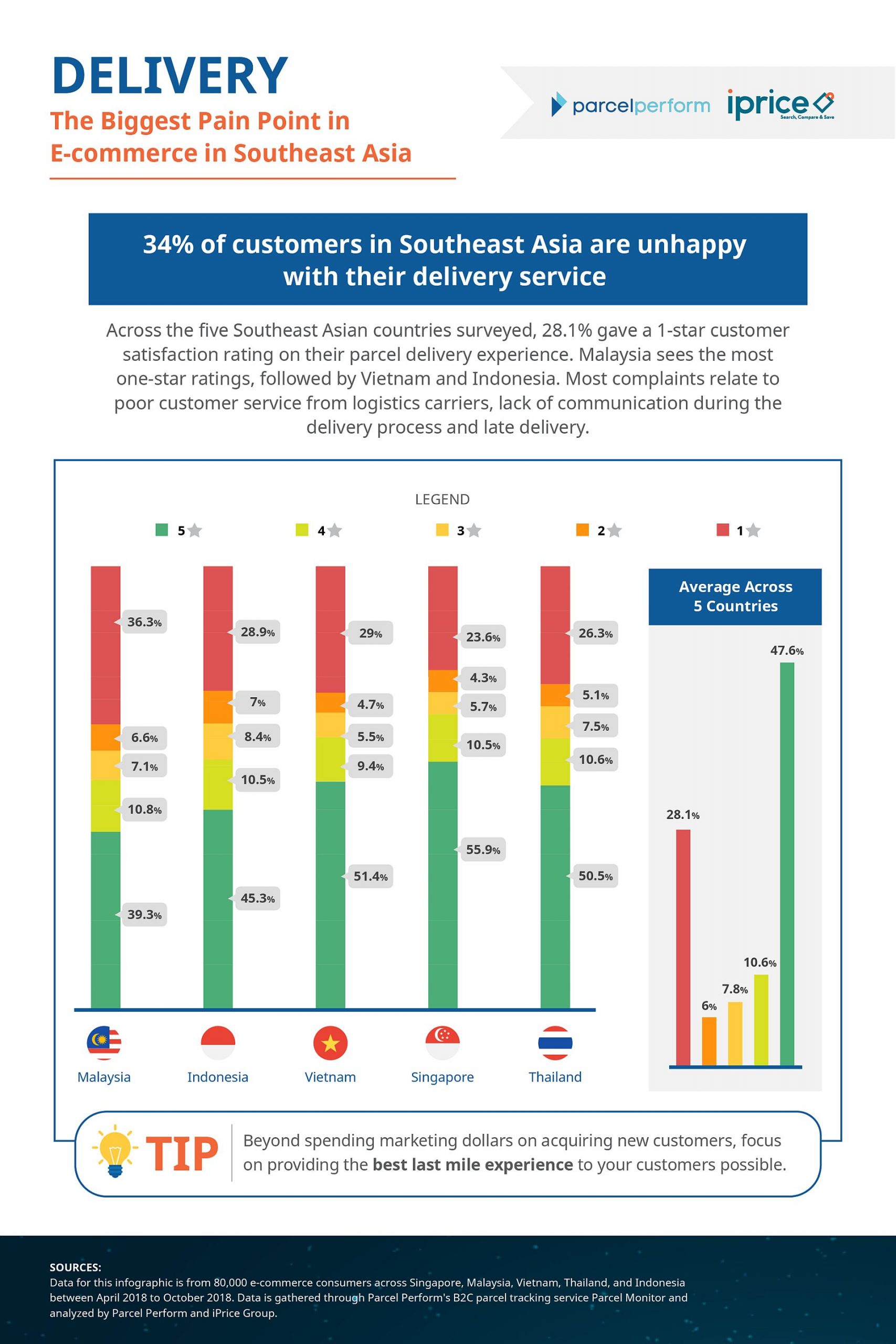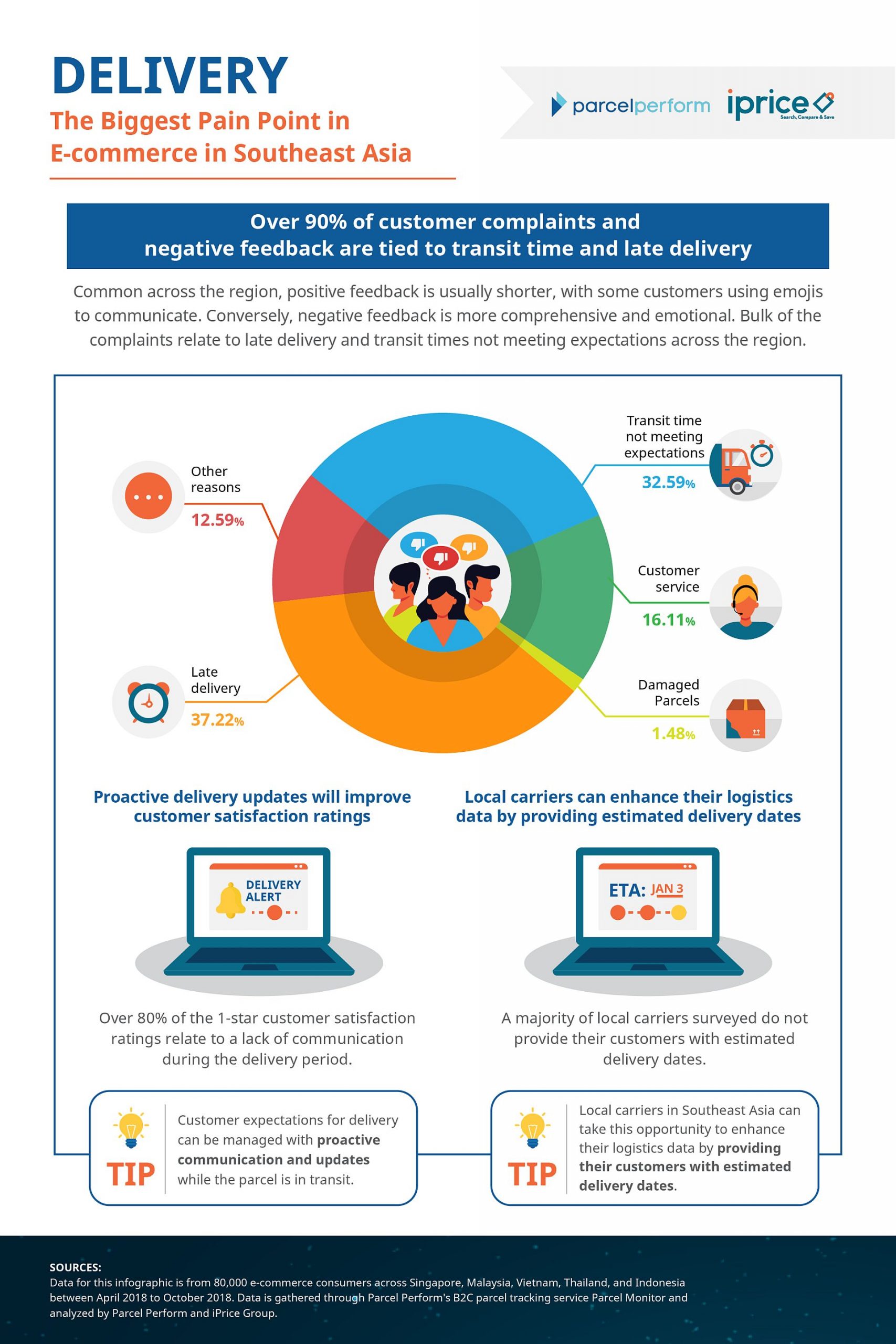Malaysia has the longest e-commerce delivery times in SEA, products take almost six days to reach customers

When it comes to online shopping, Malaysia has the longest delivery times in the region, with deliveries taking 5.8 days compared to just 3.8 days on average in the region. This, according to a survey by Parcel Perform and iPrice Group.
Despite being the fastest growing e-commerce region with over 62% Compound Annual Growth Rate (CAGR) growth over the last three years, delivery continues to be a challenge in Southeast Asia, the survey also revealed.
The survey was conducted among 80,000 e-commerce consumers across Malaysia, Singapore, Vietnam, Thailand, and Indonesia by Parcel Perform, a carrier-independent e-commerce parcel tracking platform serving over 600 logistics carriers.
The survey shows that 34% of Southeast Asian consumers continue to see parcel delivery as the biggest pain point in e-commerce.
In addition, over 90% of customer complaints and negative feedback are related to late delivery or a lack of communication about delivery statuses.
Faster deliveries continue to make consumers happy, with customer satisfaction rates decreasing as delivery time increases.
Comparing across countries in Southeast Asia, Singapore, Thailand, and Vietnam consumers are more satisfied with their e-commerce delivery experience as compared to Indonesia and Malaysia.
In Malaysia, 43% of online shoppers are unhappy with their e-commerce delivery experience.
What about other countries?
In Singapore, online shoppers are generally very happy with their delivery experience with over 75% giving a rating of 5/5 in terms of delivery satisfaction. You could attribute this to the city state being one of the smallest countries in the region, if not the world.
Meanwhile, in Indonesia, 36% of online shoppers surveyed expressed dissatisfaction with their e-commerce delivery experience.
Here are the key findings of the study:
- Faster parcel deliveries lead to higher customer satisfaction ratings
As transit time increases, happy customers (satisfaction rating of 4-5) decrease by 10-15% for each time bracket. The direct relationship between parcel transit time and customer satisfaction ratings shows that quick, punctual and responsive customer service continues to rank high in importance towards customer satisfaction in e-commerce. - 34% of customers in Southeast Asia are unhappy with their delivery service at present
34% of customers are unhappy with their delivery service (satisfaction rating 1-2). Malaysia sees the most one-star ratings, followed by Vietnam and Indonesia. As customer satisfaction is a key factor for customer retention, optimizing the delivery experience is crucial to improving customer lifetime value. - Proactively communicating with customers on expected delivery time and meeting expectations will improve customer satisfaction ratings:
Customer expectations on delivery can be managed with proactive communication and updates. Most of the one-star ratings relate to a lack of communication during the delivery period. Consumers expect regular delivery notifications, updates, and expect estimated delivery dates to be fulfilled. - Local carriers should provide estimated delivery dates when available
Further analysis shows that the bulk of carriers with Estimated Delivery Date data are mostly international carriers who operate globally. Local carriers in Southeast Asia can take this opportunity to enhance their logistics data with estimates on delivery dates to enhance their customer satisfaction ratings. - Over 90% of customer complaints and negative feedback are tied to transit time and late delivery
Over 90% of customer complaints and negative feedback are related to transit time, late delivery and a lack of communication in parcel delivery status, with some complaints around the carrier’s service quality (whether the parcel is damaged while in transit and the quality of the carrier’s customer service). Positive feedback is usually shorter, with some customers using emojis to communicate. Conversely, negative feedback is more comprehensive, more emotional and longer.
Original article from : https://www.soyacincau.com/2019/06/27/malaysia-has-the-longest-delivery-times-in-sea/


